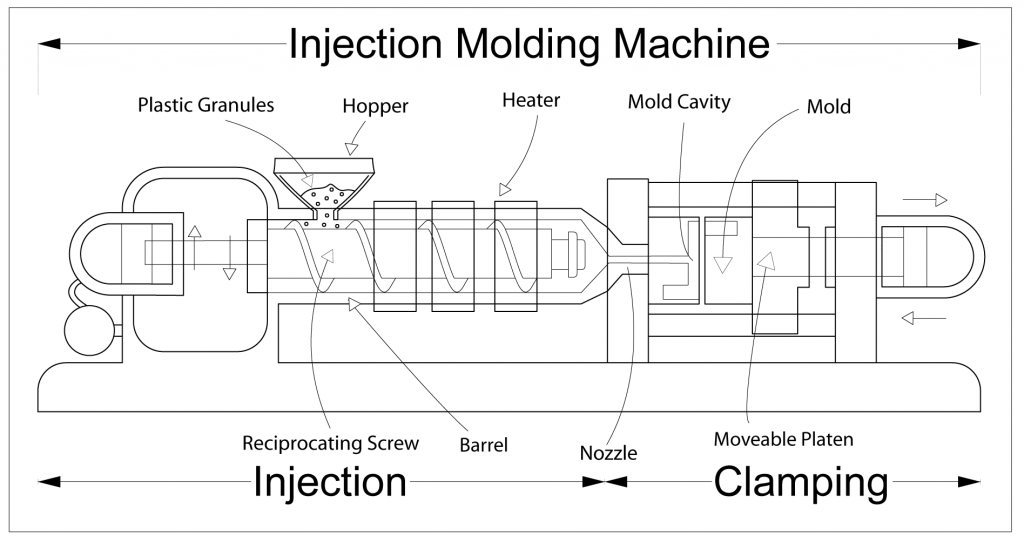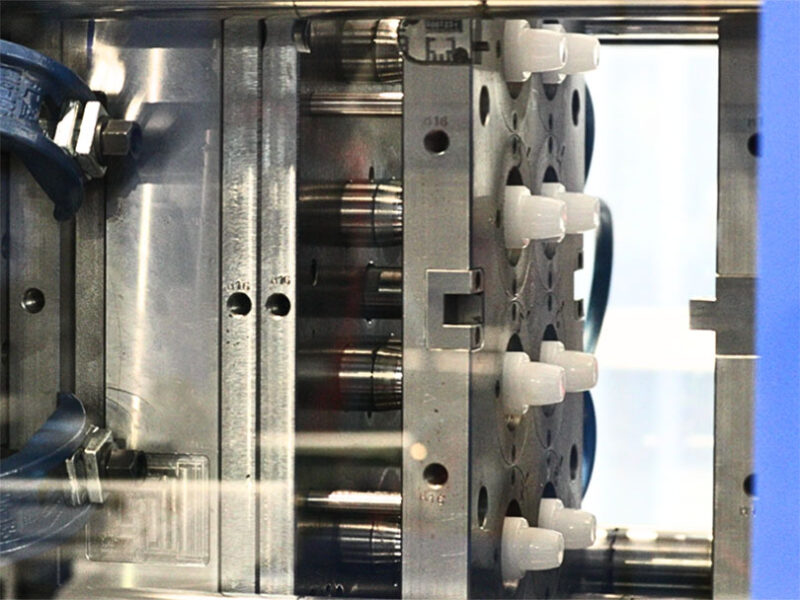Exactly How Plastic Injection Molding Drives Effectiveness in Mass Production
Exactly How Plastic Injection Molding Drives Effectiveness in Mass Production
Blog Article
Understanding the Basics of Plastic Injection Molding Processes
Plastic shot molding serves as a keystone of modern manufacturing, giving a methodical strategy to generating complicated parts with precision. This procedure not only encompasses the essential steps of melting and infusing products into mold and mildews but additionally involves a nuanced understanding of different affecting elements, such as temperature level and stress. As industries progressively demand efficiency and quality, the intricacies of this approach end up being more essential. Exploring these necessary components could disclose just how even small changes can bring about significant renovations in manufacturing end results, questioning regarding the possibility for innovation in this well established procedure.
What Is Plastic Injection Molding?
Plastic shot molding is a commonly used manufacturing process that transforms polycarbonate and thermosetting materials into accurate and complicated forms. This technique is preferred for its capacity to create high volumes of the same get rid of extraordinary precision, making it an indispensable technique in numerous industries, including automobile, consumer goods, and medical gadgets.
The process entails melting the selected plastic material and infusing it into a mold and mildew under high stress. The mold, created to the specs of the desired component, permits the liquified plastic to form as it solidifies and cools down. Once the material has actually set, the mold is opened, and the finished element is ejected.
Plastic shot molding uses a number of advantages, including minimized waste, uniformity in production, and the capacity to include elaborate designs that may be challenging with various other making methods. Additionally, it sustains a wide series of materials, each supplying special buildings that can be tailored for specific applications. As industries remain to introduce, plastic shot molding continues to be at the center, allowing the advancement of innovative products that meet progressing consumer needs.
The Shot Molding Process
The shot molding procedure is an innovative method that involves several vital phases to generate premium plastic elements. Plastic pellets are fed into a heated barrel where they are melted into a thick liquid. This molten plastic is then infused under high pressure right into a precision-engineered mold, which forms the product right into the wanted type.
When the mold is filled, the plastic is allowed to solidify and cool, taking the form of the mold and mildew tooth cavity. Cooling time is critical, as it impacts the cycle time and the last residential or commercial properties of the molded part. After adequate cooling, the mold and mildew opens, and the finished element is ejected utilizing ejector pins.

Materials Utilized in Shot Molding
Different products can be made use of in the shot molding procedure, each offering unique residential or commercial properties that deal with specific applications. One of the most commonly utilized materials consist of thermoplastics, thermosetting plastics, and elastomers.

Thermosetting plastics, like epoxy and phenolic materials, undergo a chemical adjustment during the curing procedure, causing an inflexible, stringent framework. These products are suitable for applications requiring high warmth resistance and architectural integrity, frequently utilized in electric insulators and vehicle parts.
Elastomers, including silicone and rubber-based materials, supply flexibility and durability. Their distinct properties make them appropriate for applications this hyperlink that require elasticity, such as gaskets and seals.
Furthermore, specialty materials like bio-based plastics and compounds are obtaining traction for their environmental benefits and boosted efficiency characteristics, broadening the extent of shot molding applications in various sectors. Recognizing the properties of these products is crucial for choosing the appropriate type for particular jobs.
Advantages of Injection Molding
Shot molding stands apart as an extremely reliable manufacturing process that uses many benefits for generating complex parts with accuracy. Among one of the most significant benefits is the capability to develop complex designs that would be impossible or challenging to achieve with various other techniques (Plastic Injection Molding). The process enables detailed functions and tight resistances, ensuring premium parts
Furthermore, injection visit this web-site molding is recognized for its rapid manufacturing capacities, making it a suitable selection for high-volume production. When the mold and mildew is produced, components can be generated rapidly, reducing preparations and enhancing total performance. This performance not only decreases manufacturing costs however likewise provides an affordable side in the market.
The convenience of materials made use of in injection molding further enhances its charm. A large range of thermoplastics and thermosetting polymers can be utilized, permitting makers to choose materials that best meet their specific needs, consisting of warmth, strength, and versatility resistance.
In addition, the procedure decreases waste, as excess product can typically be recycled and reused. This sustainability aspect contributes to a decreased ecological impact, making shot molding a liable manufacturing choice. On the whole, the advantages of shot molding make it a favored approach for numerous markets.
Aspects Impacting Product High Quality
While numerous elements can you can try here affect item top quality in injection molding, comprehending these aspects is crucial for achieving optimal results. Key facets include product option, refining criteria, and mold style.
Product choice plays an important duty, as different polymers exhibit unique residential or commercial properties that influence flowability, strength, and thermal stability. Insufficient material selection can lead to flaws such as warping or insufficient filling.
Handling criteria, consisting of cycle, temperature level, and stress time, need to be carefully regulated. Variations in these settings can result in incongruities partly measurements and surface coating. Excessively high temperature levels may trigger destruction of the polymer, while poor stress can result in brief shots.
Mold and mildew design is similarly essential, as it determines the circulation of the molten plastic and the cooling procedure. Inadequately created molds might result in irregular cooling rates, causing residual tensions and dimensional inaccuracies.

Verdict
To conclude, plastic shot molding serves as a crucial production process that allows the reliable manufacturing of premium parts. Mastery of the shot molding procedure, including the understanding of products and the influence of different factors on product high quality, is important for accomplishing optimal results. The benefits of this approach, such as cost-effectiveness and layout flexibility, further emphasize its value throughout several industries, solidifying its standing as a favored choice for high-volume production.
Plastic injection molding offers as a keystone of modern production, giving a systematic approach to creating intricate components with accuracy.Plastic shot molding offers a number of advantages, including minimized waste, uniformity in production, and the capability to incorporate complex styles that may be testing with various other manufacturing methods (Plastic Injection Molding). As sectors continue to introduce, plastic shot molding continues to be at the center, allowing the growth of innovative products that fulfill advancing consumer demands
The injection molding procedure is a sophisticated strategy that includes several vital phases to generate top quality plastic components.In final thought, plastic shot molding serves as a critical manufacturing procedure that enables the effective manufacturing of high-grade elements.
Report this page